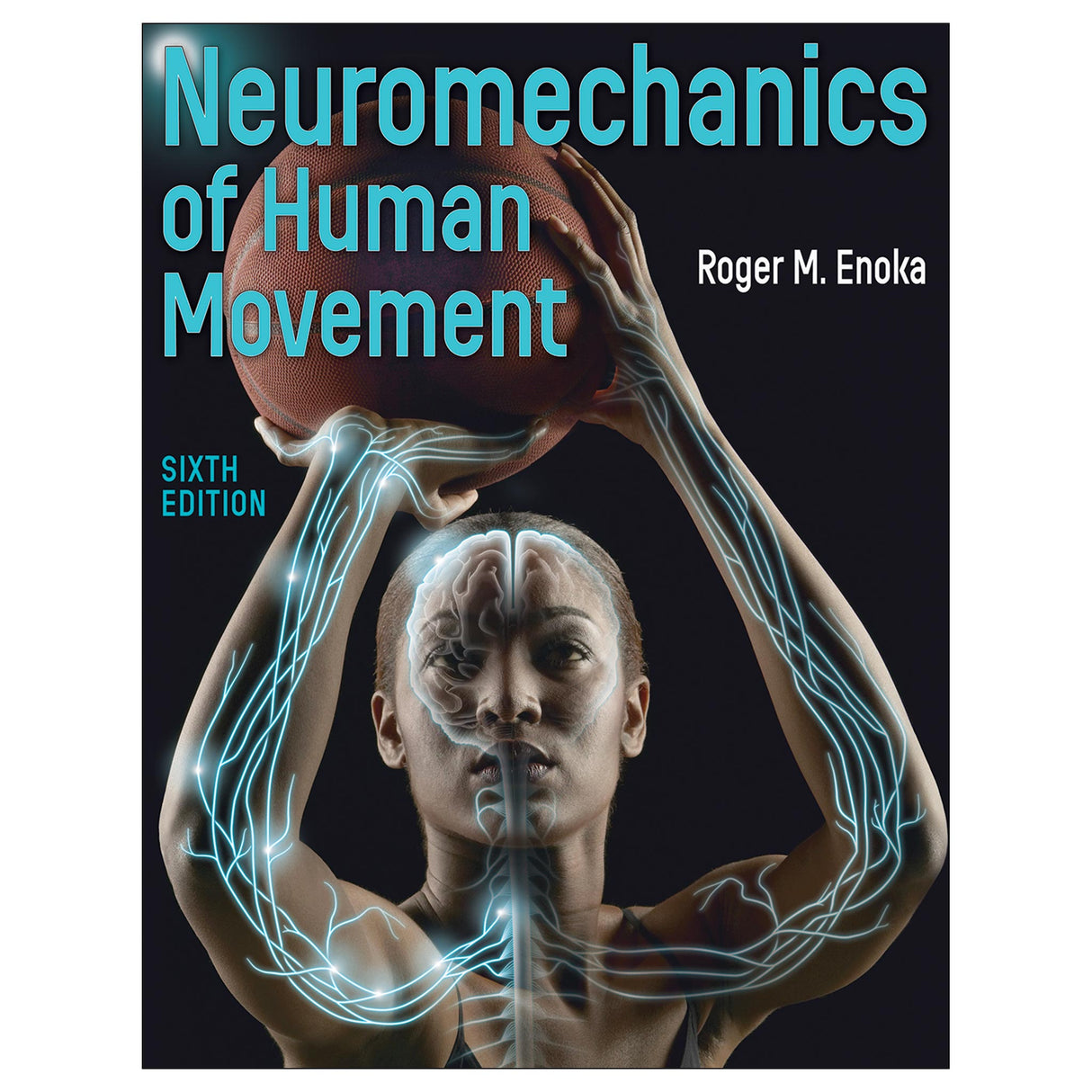Neuromechanics of Human Movement-6th Edition
Author: Roger M. Enoka
$129.00 USD
With more than 500 new references from contemporary research, this sixth edition provides a scientific foundation to the study of human movement, employing precise terms and definitions when discussing ideas. The end of the book includes an appendix that showcases both the base and derived units of the metric system, an appendix that features curve fitting and smoothing to help readers understand how to reduce noise in their data, an appendix on body segment properties, and an appendix that covers the motion at the major joints of the human body. The book also includes a glossary of key terms to help readers better understand the material. The text includes more than 50 practical learning examples, giving students the opportunity to work through a variety of problems and explore current research and applications. Content is visually reinforced with over 325 figures, including illustrations of the neuromechanics involved in sport and rehabilitation movements, to engage students.
Significant content updates in the sixth edition present information relevant for both research and clinical environments, including more contemporary examples throughout the text. The latest edition includes new information on the following subjects:
- Wearables to track movement kinematics
- Characterization of gait disorders
- Technical advances in electromyography
- Interactions between muscle, tendon, bone, and joint
- Intermuscular reflex pathways
- Control of intentional actions
- Fatigue and fatigability
- Training protocols
- Motor recovery after nervous system injury
The sixth edition of Neuromechanics of Human Movement provides a scientific basis for the study of human movement while continuing to expand current knowledge in the fields of biomechanics and neurophysiology. By integrating these fields in a unique framework, this text offers professionals and students both valuable clinical information and inspiration to deepen their study of human movement.
Audience
Graduate-level textbook for students of biomechanics or motor control; reference for professionals in biomechanics, motor behavior, neuroanatomy, and muscle physiology, as well as specialists in musculoskeletal or neuromuscular rehabilitation.Chapter 1. Describing Motion
Measurement Rules
Motion Descriptors
Constant Acceleration
Up and Down
Scalars and Vectors
Linear and Angular Motion
Wearable Devices
Summary
Suggested Readings
Chapter 2. Movement Forces
Laws of Motion
Describing Forces in Human Movement
Forces Due to Body Mass
Forces Due to the Surroundings
Musculoskeletal Forces
Summary
Suggested Readings
Chapter 3. Movement Analysis
Static Analysis
Dynamic Analysis
Momentum
Work
Summary
Suggested Readings
Chapter 4. Fundamental Movements
Walking and Running
Jumping
Throwing and Kicking
Cycling
Summary
Suggested Readings
Part II. The Motor System
Chapter 5. Excitable Membranes
Essentials of Electricity
Resting Membrane Potential
Neurons
Synaptic Transmission
Electromyography
Summary
Suggested Readings
Chapter 6. Muscle and Motor Units
Muscle
Excitation–Contraction Coupling
Motor Unit
Muscle Mechanics
Summary
Suggested Readings
Chapter 7. Neural Control of Movement
Spinal Reflexes
Automatic Behaviors
Voluntary Actions
Summary
Suggested Readings
Part III. Adaptability of the Motor System
Chapter 8. Acute Adjustments
Warm-Up Effects
Flexibility
Muscle Soreness and Damage
Fatigue
Neuromuscular Potentiation
Arousal
Summary
Suggested Readings
Chapter 9. Chronic Adaptations
Muscle Strength
Muscle Power
Neuromuscular Adaptations to Microgravity
Motor Recovery After Nervous System Injury
Adaptations in Older Adults
Summary
Suggested Readings
Appendix A. SI Units
Appendix B. Curve Fitting and Smoothing
Appendix C. Body Segment Properties
Appendix D. Range of Motion at the Major Joints of the Human Body
The neuromechanics of cycling
Wearable devices to measure motion
All ancillaries are free to adopting instructors through HKPropel.
Image bank. Includes most of the figures, content photos, and tables from the text, sorted by chapter. These can be used in developing a customized presentation based on specific course requirements.





